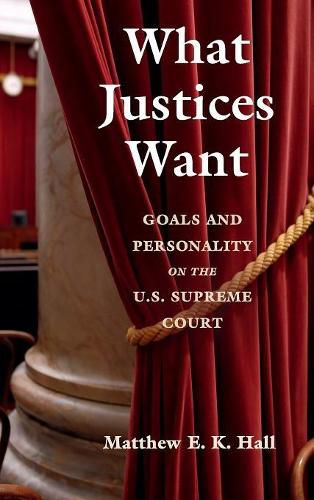Readings Newsletter
Become a Readings Member to make your shopping experience even easier.
Sign in or sign up for free!
You’re not far away from qualifying for FREE standard shipping within Australia
You’ve qualified for FREE standard shipping within Australia
The cart is loading…






The most sophisticated theories of judicial behavior depict judges as rational actors who strategically pursue multiple goals when making decisions. However, these accounts tend to disregard the possibility that judges have heterogeneous goal preferences - that is, that different judges want different things. Integrating insights from personality psychology and economics, this book proposes a new theory of judicial behavior in which judges strategically pursue multiple goals, but their personality traits determine the relative importance of those goals. This theory is tested by analyzing the behavior of justices who served on the US Supreme Court between 1946 and 2015. Using recent advances in text-based personality measurement, Hall evaluates the influence of the ‘big five’ personality traits on the justices’ behavior during each stage of the Court’s decision-making process. What Justices Want shows that personality traits directly affect the justices’ choices and moderate the influence of goal-related situational factors on justices’ behavior.
$9.00 standard shipping within Australia
FREE standard shipping within Australia for orders over $100.00
Express & International shipping calculated at checkout
The most sophisticated theories of judicial behavior depict judges as rational actors who strategically pursue multiple goals when making decisions. However, these accounts tend to disregard the possibility that judges have heterogeneous goal preferences - that is, that different judges want different things. Integrating insights from personality psychology and economics, this book proposes a new theory of judicial behavior in which judges strategically pursue multiple goals, but their personality traits determine the relative importance of those goals. This theory is tested by analyzing the behavior of justices who served on the US Supreme Court between 1946 and 2015. Using recent advances in text-based personality measurement, Hall evaluates the influence of the ‘big five’ personality traits on the justices’ behavior during each stage of the Court’s decision-making process. What Justices Want shows that personality traits directly affect the justices’ choices and moderate the influence of goal-related situational factors on justices’ behavior.